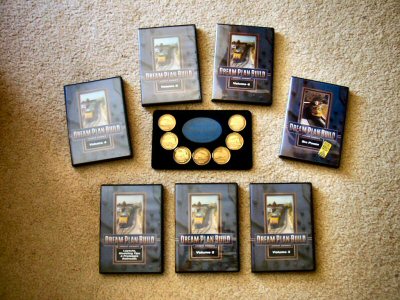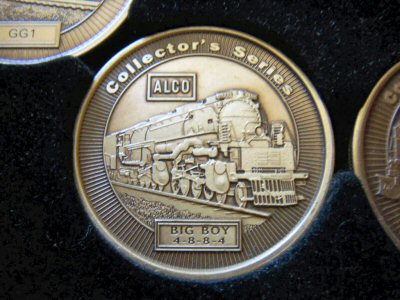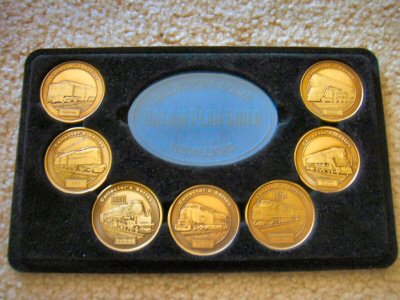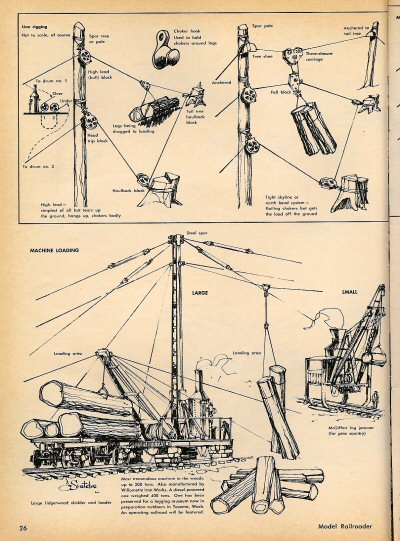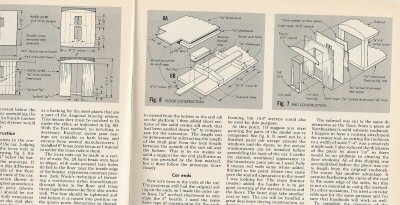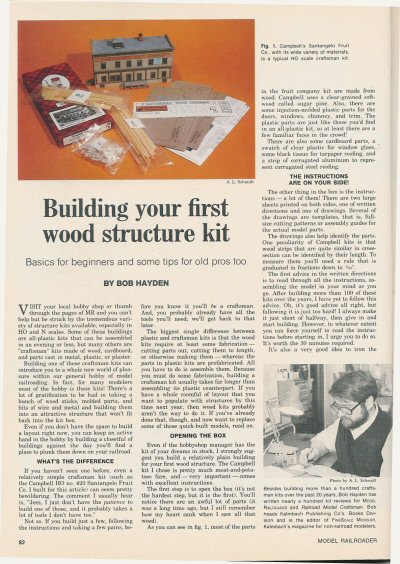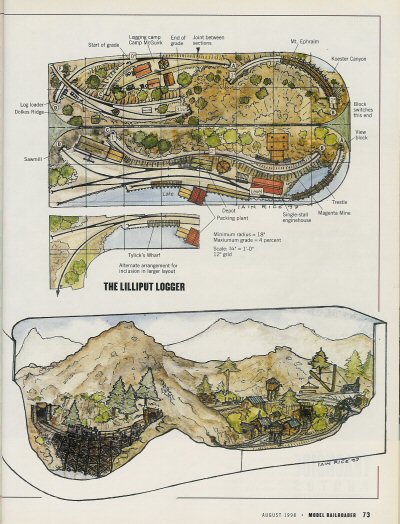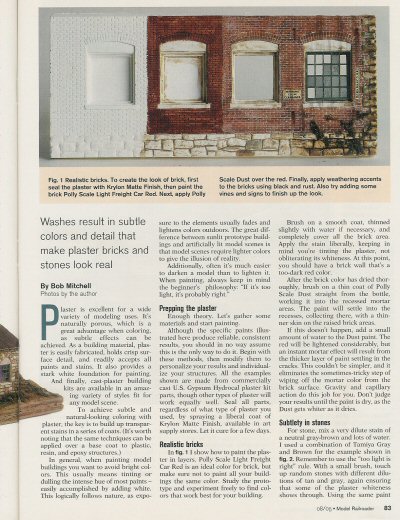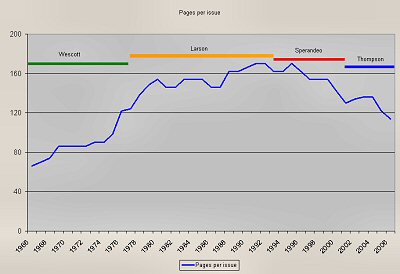Wed 31 Jan 2007
40 Years of August in Model Railroader – Part 9
Posted by Daniel Swearingen under Model Railroader[5] comments / Leave a comment
Dave Nelson made a good comment on Part 1 of this series:
he wrote
Three observations
When comparing page counts how do you factor in Great Model Railroads, Model Railroad Planning, and other “special” issues that didn’t exist at one time? Arguably MR is now a 14 or is it 15 issue a year magazine now.
I would also point out that using the August issue as comparison is a bit odd — I bet that has the lowest news stand sale of any issue (since I suspect less model railroading is done that month) and thus they probably tend not to put their best articles in that issue.
Third observation is that had I ranked issues years ago, before beginning my layout, I would have placed far less value on articles about benchwork, tracklaying, wiring, yard design etc than I would now. Soon I will be deeply involved in structures and I imagine my ranking of articles will change once again. Just a point
Dave Nelson
These are good points and bear expanding on:
Page counts and special issues: No, I did not include the new special issues in the page/cost comparisons but these special issues are not part of the 12-issue annual subscription. Even subscribers must pay extra for them. I might feel better about my subscription dollars if MR spread the content in these issue into the 12 issues through the year. No doubt Kalmbach would need to charge more but at the same time the quality of the magazine would be improved.
Why look at only August? I agree it is probably the low mark of the year. People tend to be on vacation in July and August. However, this should be true over all 40 years I looked at. If I compared December issues to August issues that would obviously be a problem. Despite all that, there were some really good August issues! Really it was random timing that led me to choose August — I had just recieved my August 2006 issue when I started the series.
Why look at only one month of the year? This review ended up being a LOT of work just looking at 40 issues. There’s no way I could have done a resonable job including more months and I was interested in including as many years as possible.
Dave’s last point: that what constitutes a “good” article is changable and prejudiced by what you are interested in TODAY. I absolutely agree. That’s why I gave up on ever reducing my MR collection to a file collection of “just articles I like.” I tried that once and almost immediately regretted it and had to spend a lot of time and $$ on eBay getting the whole issues back. As far as affecting how I reviewed the issues? Obviously the reviews of the issues are my personal opinions.
I have been feeling for many years that the quality of the magazine has declined. I was interested in whether I would find that old issues were bad too, in which case MY standards had changed, or whether I really liked those issues better. For my part, I found a real trend downward in quality in MR.
However, one thing that Dave wrote REALLY got me thinking: those “special” issues. I have bought several of them over the years and they have good material. If MR included all that great content — and yes, charged more – I would very likely feel better about the magazine.
40 Years of August in Model Railroader – Part 1
40 Years of August in Model Railroader – Part 2
40 Years of August in Model Railroader – Part 3
40 Years of August in Model Railroader – Part 4
40 Years of August in Model Railroader – Part 5
40 Years of August in Model Railroader – Part 5½
40 Years of August in Model Railroader – Part 6
40 Years of August in Model Railroader – Part 7
40 Years of August in Model Railroader – Part 8
40 Years of August in Model Railroader – Part 9
